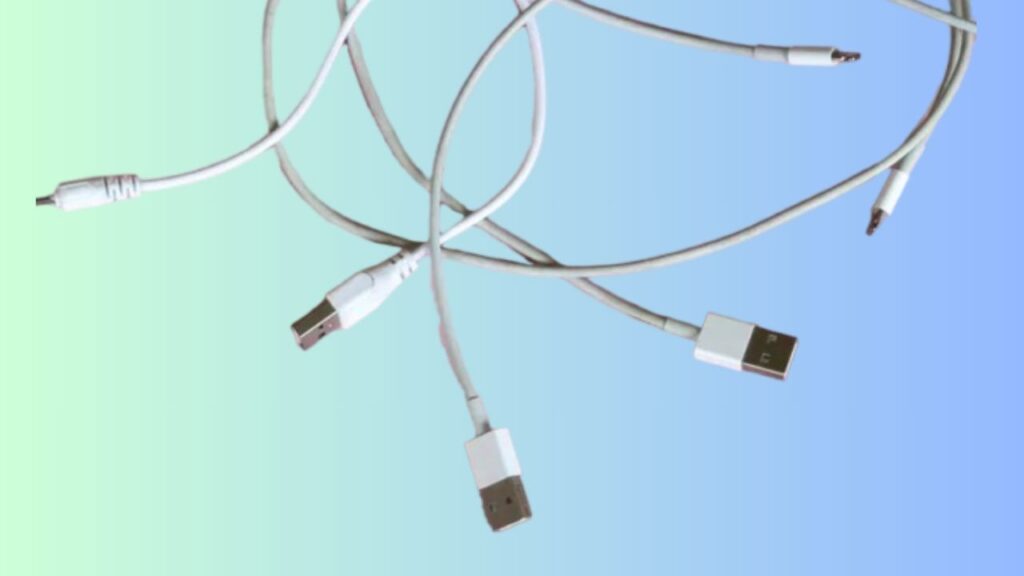The humble USB port is ubiquitous- on our computers, laptops, phones, game consoles, and even our cars.
However, have you ever given any thought to the operation of these little rectangular slots?
USB (Universal Serial Bus) connections are now commonplace in our networked world, where they are essential for connecting and powering a vast number of devices.
The way we connect to our digital environment has been completely transformed by USB technology, which can be used for everything from charging smartphones to connecting external storage devices and peripherals.
This post will examine the internal mechanisms of USB ports and how they enable smooth power delivery and data transmission across a variety of devices.
From Humble Beginnings to Tech Titans
The Universal Serial Bus, or USB for short, was introduced in 1996. Its creators aimed to create a standardized interface that could replace the clunky and slow serial and parallel ports of the time.
And boy, did they succeed! USB swiftly established itself as the standard connector for attaching external drives, printers, and scanners to other devices.
Understanding USB Basics
Universal Connectivity: As the name suggests, USB offers universal connectivity for various devices. Whether it’s a laptop, desktop computer, smartphone, printer, or other gadgets, USB ports provide a standardized interface that allows these devices to communicate and share data.
Physical Design: USB ports are easily recognizable by their rectangular shape with a distinctive trident symbol. They come in different versions, including USB-A, USB-B, USB-C, and micro-USB, each with its own set of characteristics and applications.
How USB Transfers Data
Data Wires: USB cables have four wires, two of which are dedicated to data transfer – one for transmitting data (D+) and the other for receiving data (D-). These wires facilitate bidirectional communication between the connected devices.
Data Packets: USB devices communicate through the exchange of data packets. Information is divided into packets, each with a specific structure containing headers, payload data, and error-checking information. This ensures reliable and error-free data transmission.
Data Transfer Speeds: USB technology has evolved over the years, with different versions offering varying data transfer speeds. USB 2.0, USB 3.0, USB 3.1, and USB 3.2 are common iterations, each improving upon the speed and efficiency of its predecessor.
Read More – >>> What is USB 3.0 (SuperSpeed USB)
The Many Faces of USB
Not all USB ports are created equal. Over the years, several USB standards have emerged, each offering faster data transfer speeds and more power delivery.
Here’s a quick rundown of the most common ones:
- USB 1.1: The OG USB offers slow data transfer speeds of up to 12 Mbps.
- USB 2.0: The workhorse of the USB world, with data transfer speeds of up to 480 Mbps.
- USB 3.0/3.1/3.2: These are the speed demons, offering data transfer speeds of up to 5 Gbps (USB 3.0) and a whopping 20 Gbps (USB 3.2 Gen 2×2).
- USB-C is the new kid on the block, featuring a reversible connector and support for faster data transfer and power delivery standards.
Power Delivery through USB
Power Wires: In addition to data transfer, USB cables also include power wires – one for supplying power (Vbus) and another for the ground (GND). This allows devices to draw power from the connected USB port.
Device Charging: A lot of electronics, like tablets and smartphones, are charged via USB connections. With the greater power supply capabilities of the latest USB ports, a wider range of devices may be supported and quicker charging rates are possible.
USB Hubs and Connectivity
USB Hubs: USB hubs expand the number of available ports on a device, allowing users to connect multiple peripherals simultaneously. Hubs have their own power source and distribute power and data to connected devices.
Plug and Play Perfection: One of the best things about USB is its plug-and-play functionality. No more fiddling with IRQ settings or hunting for drivers!
When you plug in a USB device, your computer automatically detects it and installs the necessary drivers.
Devices can be connected or disconnected without restarting the computer, providing a convenient and user-friendly experience.
Conclusion:
In today’s digital era, USB ports have evolved into an essential element of our everyday lives.
They provide a flexible and standardized means of connecting and charging an extensive array of devices, making them integral to contemporary computing.
The significance of USB technology lies in its capacity to transmit power and facilitate the seamless transfer of data.
As technology continues to advance, we can expect future enhancements in USB standards. These forthcoming developments hold the promise of even faster data transfer rates and enhanced compatibility with an ever-expanding range of devices.
USB technology is poised to play a crucial role in shaping the future of connectivity and device interaction. Comment here.

